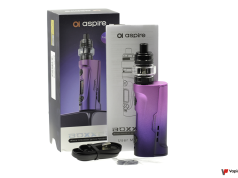The tobacco company is planning to release the full study, including all the raw data by next June. In the meantime said Mikael Franzon, senior medical adviser to Philip Morris International, Philip Morris Korea is conducting further testing on animals to get a clearer picture as to how many of the risks iQOS actually removes.
“The new study needs multi-phased tests to confirm the reduction of risks in total,” said Franzon. “Measuring the reduction of harmful substances and confirming lowered toxicity is one of the steps to secure proofs that the company is seeking.”
Studies conducted by Big Tobacco are met with skepticism
HnBs are battery operated smokeless alternatives to combustible cigarettes and work by heating sticks containing tobacco leaves. These refills which look like short cigarettes, must be inserted into the main device and heat up once the latter is switched on.
In Korea, as around the world, many are still skeptical about the relative benefits of switching from regular cigarettes to HnB devices or electronic cigarettes. Additionally, health experts are reasonably cautious when such studies analyzing the effectivity of a product, are conducted by the same company selling it.
Philip Morris Korea’s corporate affairs director, Kim Byung-chul, said the company is fully aware of these credibility issues. “We’re searching ways to overcome this issue. We have released our latest study results. In early next year, we will disclose raw data of the study. It is very rare to release raw data in this industry,” said Kim.
HnB devices taxed as of next month
So far, these products had held an advantageous position in the market, as South Korea had categorized such tobacco products differently than their combustible counterparts, hence iQOS and its competitor, BAT’s Glo, were so far levied at a lower tax rate than the 75% imposed on regular cigarettes.
Then last October, Korea’s National Assembly’s finance committee discussed the possible implementation of a tax on HnB. A bill implementing this excise tax was passed last Thursday, and it is expected to go into effect sometime next month.
Read Further : Korea Biomedical Review










Scientists can use percentages in various useful or non-useful ways. For example, it’s common knowledge that if a study shows that a particular drug “kills 99% of cancer cells,” that isn’t necessarily exciting and wonderful. For example, if a person has cancer with even just a small malignant tumour, measuting just 5 mm (0.5 cm) across, that tumour may contain 10 million cancer cells, each of which might be able to spread to the rest of the body and cause another tumour there. If the drug in question kills 99% of cancer cells in the 5 mm tumour, then it it doesn’t kill1% of the cells, leaving 1% of 10,000,000 cells, or 1,000,000 (1 million) still alive. So it’s not that great, because there are still a lot of cancer cells left and they are growing rapidly and can spread. Removing 90% of toxins, likewise, leaving 10% of them intact, may not be as exciting as it sounds, especially if the toxins are highly potent ones.